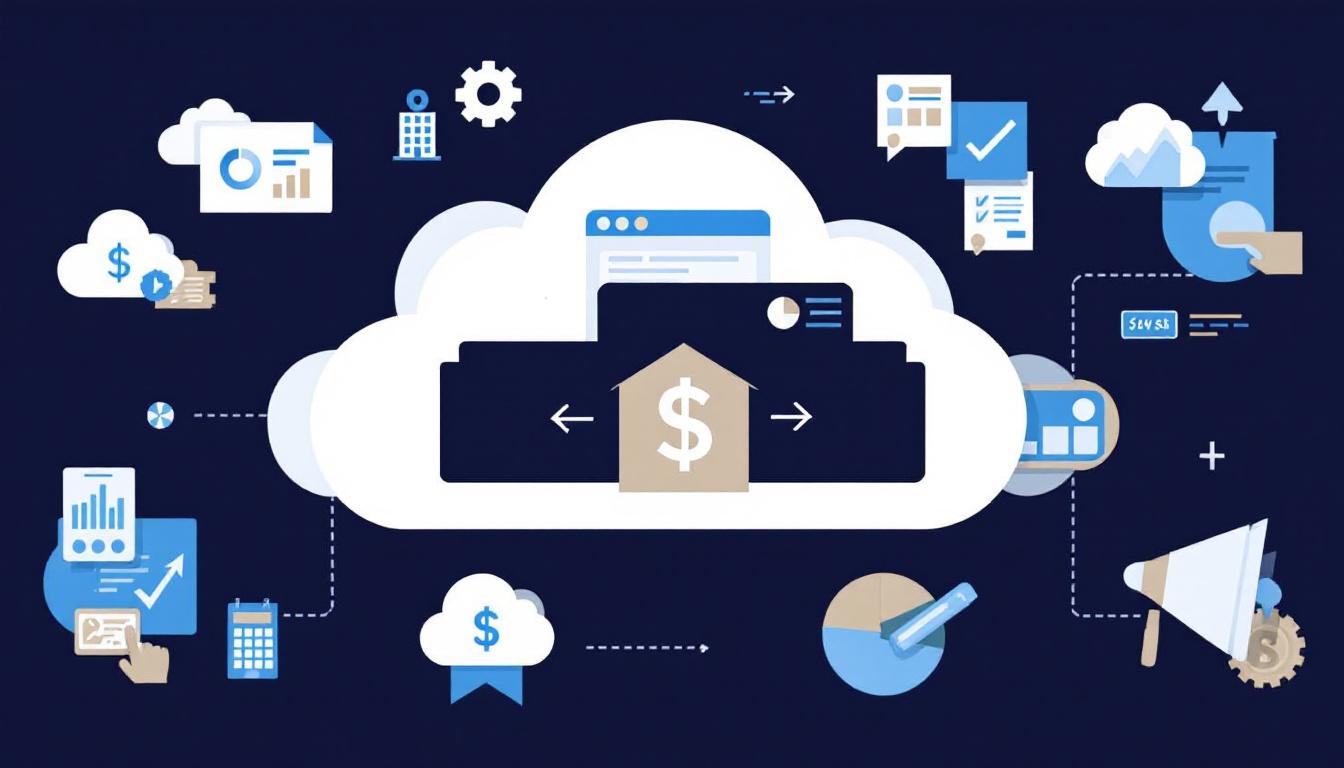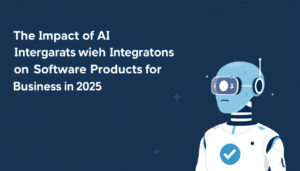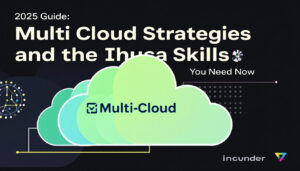Effective cloud financial management has become essential for IT organizations seeking to control costs and support business growth. As cloud adoption accelerates, old IT budgeting practices no longer offer the precision or flexibility needed. Finance teams, developers, and business leaders must work together to set clear spending priorities and track usage in near real time.
Mastering cloud financial management means organizations can deliver value without overspending or losing transparency. The shift to cloud demands stronger cost governance, accessible reporting, and new tools to foster accountability. In this changing environment, aligning financial management with business needs enables smarter innovation and keeps technology investments on track.
Understanding financial best practices is critical for anyone responsible for IT resources. To learn more about practical approaches for tech leaders and developers, explore the DeepSeek guide for IT pros.
Understanding Cloud Financial Management
Cloud financial management (CFM) is an organized approach to monitoring, controlling, and optimizing how an organization spends money on cloud services. Adopting CFM allows IT and business leaders to track usage, respond to overages quickly, and allocate resources effectively. As cloud usage grows, traditional budgeting becomes less effective. CFM fills this gap with real-time visibility and better cost management.
 Photo by Lukas
Photo by Lukas
Defining Cloud Financial Management and Its Significance
CFM is the discipline of managing cloud costs by combining financial best practices with technical insights. This structured approach supports business priorities without sacrificing efficiency or flexibility. Cloud environments require new financial controls because costs can escalate with little warning. Adopting an active CFM strategy protects budgets and aligns spending with business outcomes.
CFM is critical for several reasons:
- Transparency: It breaks down spending at a detailed level, so teams know exactly where the money goes.
- Control: CFM provides clear policies and rules for approving cloud use, helping organizations stay within budget.
- Business Alignment: Spending data is tied to business objectives, bringing IT and finance teams together.
- Agility: With faster reporting, organizations can adapt their cloud usage as needs change.
To see how financial strategy impacts digital operations generally, review the financial planning for digital entrepreneurs for practical methods that also suit IT decision-makers.
Traditional IT Financial Management vs. Cloud-Based Approaches
Legacy IT financial management relied on annual budgeting for hardware and licenses. Costs were fixed and predictable. In contrast, cloud services follow pay-as-you-go models. This flexibility introduces new challenges:
- Short-term projects can quickly accrue costs.
- Teams may launch resources and forget to decommission them.
- Budgeting must adapt to variable expenses and rapid scaling.
Key differences between traditional and cloud financial management include:
- Speed: Traditional processes move slowly with clear, planned cycles. Cloud requires a fast response.
- Granularity: Old systems bundled costs; cloud platforms provide detailed usage reports.
- Responsibility: IT and finance share the responsibility for cloud spending, unlike the siloed models of the past.
Cloud-based approaches need constant attention. Teams should be able to both spot and act on spend anomalies in near real time. For a deep dive, refer to the AWS Cloud Financial Management overview, which breaks down the steps for building cloud-native financial controls.
Core Concepts: Visibility, Accountability, and Optimization
The foundation of effective CFM rests on three main pillars:
1. Visibility:
Every stakeholder, from engineers to executives, needs access to cost and usage data. Dashboards convert complex billing information into simple, actionable insights.
2. Accountability:
Clear ownership reduces waste. Set budgets for users, projects, or departments, and assign spend responsibility. Automatic alerts help maintain discipline and reduce surprises.
3. Optimization:
Continuous improvement is key. Review usage, eliminate idle resources, reserve capacity where cost-effective, and seek discounts. This ongoing process aligns spending with value.
Enterprises benefit from practices like tagging, regular audits, and cross-department collaboration. Streamlined optimization, covered in the AWS beginner-friendly guide on cloud financial management, ensures that each dollar is well spent as business needs shift.
A focus on these pillars supports organizations that want reliable, predictable cloud costs. These fundamentals also apply to emerging tech, like those highlighted in the Serverless architectures guide, where cost control remains mission-critical.
Key Pillars of Effective Cloud Financial Management
A sound cloud financial management (CFM) framework relies on several interconnected pillars. By structuring their approach around these areas, organizations establish the foundation for accountability, transparency, and efficiency across IT and business operations. Each pillar, from cost visibility to KPI tracking, directly affects both the daily workload of technical teams and the long-term financial health of the business.
Cost Visibility and Allocation
Robust cost visibility is the cornerstone of effective CFM. Organizations must understand not only how much they are spending in the cloud but also which teams or projects drive those costs. Accurate allocation prevents surprises and prompts action where waste is detected.
To achieve detailed tracking and allocation, companies use:
- Resource Tagging: Assigning descriptive labels (tags) to resources, such as project name, department, or environment, enables granular tracking.
- Cost Centers: Mapping resource tags to cost centers helps finance teams tie spending directly to business units or services.
- Chargeback Models: Teams or departments are billed for their actual cloud usage. This approach increases ownership but may require precise metering.
- Showback Models: Costs are reported to internal users for visibility, without direct billing. This method improves awareness and encourages accountability.
Applying these techniques helps organizations create a culture of ownership around cloud resources. Recognizing spending patterns makes it possible to tie usage to value, which supports well-informed decisions about scaling or reallocating resources. Connections exist between this discipline and the importance of cross-platform compatibility, as both rely on clear mapping of resource utilization.
Budgeting and Forecasting for Cloud Spend
Setting realistic budgets and forecasting future costs are vital for aligning IT with business goals. The cloud’s pay-as-you-go model introduces unpredictability, making it essential to use practical tools and approaches that maximize accuracy.
Key steps include:
- Historical Data Review: Analyze past cloud usage to identify spending trends and seasonality.
- Budget Creation: Set monthly or quarterly budgets by department, project, or application.
- Forecasting Tools: Use automated forecasting provided by cloud vendors or budgeting software, factoring in anticipated growth.
- Variance Monitoring: Compare actual spend to budget and adjust projections as needed.
An example of increased predictability is the Bolt Flat Fee Payments AI, which demonstrates how flat-fee pricing models can stabilize costs over time. Applying a similar philosophy, IT can implement spending caps or reservations to contain cloud outlays and support financial planning.
Cloud budgeting is not a one-time activity. Frequent reviews ensure budgets remain relevant and give stakeholders time to react before overruns occur.
Policy Management and Governance
Policies form the backbone of disciplined cloud management. Governance ensures usage aligns with business priorities and regulatory requirements. The best programs utilize automation, making policy enforcement practical and scalable across sprawling cloud environments.
Common policy practices include:
- Automated Guardrails: Use scripts or cloud-native tools to apply usage limits, schedule shutdowns for idle resources, and enforce tagging standards.
- Real-Time Alerts: Set up notifications for unusual usage patterns or spending spikes.
- Periodic Reviews: Routinely review policies, access controls, and cost reports to adjust for evolving requirements.
A well-governed environment reduces the risk of waste, security issues, and budget overruns. Strong governance practices align with broader cloud-based digital product security imperatives, reinforcing the connection between financial stewardship and risk management.
Reporting and KPI Tracking
Clear reporting and meaningful KPIs support ongoing decision-making and continuous improvement. A good CFM program provides regular, actionable insights to both IT and business leaders.
Effective reporting rests on:
- Automated Dashboards: Deliver real-time cost, usage, and forecast data.
- Custom Reports: Tailor reports to specific stakeholders, such as engineering managers, finance, or executives.
- Key Performance Indicators: Popular CFM KPIs include:
- Cost per business unit, project, or workload
- Cloud spend as a percentage of total IT budget
- Resource utilization and waste (e.g., idle or underused instances)
- Compliance with budget targets
Documenting and tracking these metrics promotes transparency and accountability. Organizations that integrate reporting into their daily and quarterly processes find it easier to act on insights and make timely adjustments. The alignment of financial reporting and technical KPIs is central to effective financial planning strategies for digital product entrepreneurs, making these efforts mutually reinforcing.
 Photo by Kampus Production
Photo by Kampus Production
Cloud Cost Optimization Techniques
Practical cost optimization ensures cloud investments drive efficiency without compromising stability or performance. The right mix of monitoring, automation, and purchasing models cuts unnecessary expenses while sustaining operations. This section outlines proven methods IT and business teams use to maintain financial control and cloud performance.
Right-Sizing and Resource Management
Right-sizing matches resource allocation to real usage patterns. Over-provisioned servers and databases increase running costs without adding value. Under-provisioning, on the other hand, can affect reliability. Effective resource management involves:
- Continuous Monitoring: Track CPU, memory, and storage usage at regular intervals.
- Regular Auditing: Identify idle or underused resources through scheduled reviews.
- Performance Benchmarks: Set clear requirements for each workload, adjusting resources as usage changes.
Automation plays an important role. Many organizations rely on cloud-native tools to automatically adjust instance types or scale server clusters up and down. This automation aligns with approaches found in Cloud Automation Strategies, which describes how automated decisions can fine-tune resource use and increase cost efficiency.
Automation and Scheduled Resource Usage
Manual control of cloud resources is inefficient and prone to oversight. Automated scheduling and dynamic scaling solutions help control costs by matching resource usage to demand. Core practices include:
- Automated Shutdowns: Schedule non-production environments to power off during nights and weekends.
- Scaling Policies: Use auto-scaling for compute resources so they grow and shrink with actual demand.
- Temporary Environments: Create development and testing resources on-demand and remove them after use.
Automating scheduling and scaling reduces waste while preserving system availability. For detailed real-world techniques, the article on cloud cost optimization best practices highlights strategies IT teams can implement to streamline expenses and gain visibility into cloud spending.
Leveraging Reserved and Spot Instances
Cloud providers offer pricing models tailored for both predictable workloads and flexible, short-term use cases. Understanding and applying these can drive significant savings:
- Reserved Instances: Purchase resources in advance at a discounted rate for workloads with stable, long-term requirements.
- Spot Instances: Choose lower-priced, market-driven capacity for flexible or non-critical workloads that can tolerate interruptions.
A blended purchasing strategy lets teams cover base workloads with reservations while using spot capacity for burst activities. Proper usage of these models, combined with automation and monitoring, reduces total costs and supports agile development. This approach fits well within a broader cloud optimization plan aimed at balancing financial efficiency with technical performance.
Aligning Cloud Financial Management with Business Objectives
Business leaders increasingly expect IT to drive both operational efficiency and strategic value. Aligning cloud financial management (CFM) with corporate goals ensures that every dollar spent supports long-term vision, operational needs, and user expectations. A connected approach ties cloud decisions to results, making IT a proactive partner in advancing organizational priorities.

Photo by Vlada Karpovich
Translating Business Strategy into Cloud Spend
CFM enables organizations to allocate budgets in direct response to evolving business targets. Modern cloud tools let you map spending to initiatives across departments and projects, supporting faster innovation while protecting margins.
- Budgets can be set against defined business cases, not just technical needs.
- Automated alerts notify teams when spending drifts from plan, tying financial decisions to real-world outcomes.
- Reporting at the project or product line level connects cloud activity with business performance.
These connections give leaders data-driven confidence to reinvest savings or redirect funds, directly supporting competitive strategy. Practices such as resource tagging and disciplined tracking are detailed in the AWS CFM industry guidance, which outlines how aligning CFM to business goals accelerates both growth and economic value.
Supporting Agility and Innovation
Aligning CFM with objectives does more than control costs. It also unlocks IT’s ability to contribute to rapid change and continuous improvement.
- Projects scale up or down as needed, supporting product launches or business pivots.
- Transparent cost structures allow for experimentation and early fail-fast cycles without hidden risks.
- Forecasting identifies future resource needs, guiding investment timing and scope.
Cloud-aligned spending keeps organizations nimble, allowing them to respond quickly to market shifts or user demand. Good CFM practices also prevent resource waste, enabling IT and product teams to focus funds where they drive the most impact.
Financial Management as a Foundation for User Experience
Strategic allocation of cloud budgets enables resources to be invested in spaces that improve the end-user experience directly. Optimized CFM frees capital for performance enhancements, personalized features, or faster releases, all of which deepen customer engagement.
For example:
- If CFM creates savings, those funds can be used to improve digital interfaces, speed, or accessibility.
- Budget tracking makes it possible to justify high-impact development work that attracts and retains users.
See how efficient allocation and cloud-based tools contribute to enhancing user experience in digital products, illustrating that informed financial decisions power long-term digital product success.
Delivering Competitive Advantage Through Strategic Cloud Spend
Companies that align CFM with business objectives position themselves to achieve measurable advantages. Predictable, transparent spending lets teams outmaneuver less organized competitors. IT and finance become partners in fueling business growth.
- Data transparency improves investment decisions.
- Speed to market increases as resources are available when and where needed.
- Risk declines through clear ownership and accountability.
For detailed strategies and key tools that help optimize CFM for scalable outcomes, reference the overview from Acceldata’s discussion on scalable financial success.
By linking financial control with business strategy, cloud spending transforms from a cost center to a driver of agility and innovation, enabling connected, user-centered digital growth.
Challenges and Best Practices in Implementing Cloud Financial Management
Adopting cloud financial management (CFM) presents a range of obstacles for IT teams and business leaders. These challenges can disrupt transparency, delay cost control, and weaken stakeholder trust if not addressed directly. Successful cloud financial management hinges on clear visibility, skilled staff, and broad organizational support. The following sections outline the most frequent barriers and offer practical solutions to overcome them.
Lack of Cost Visibility
Cloud environments create a dynamic cost structure. Without the right tools and policies, expenses become opaque, making accurate tracking difficult.
- Teams often struggle with fragmented billing data and unclear chargebacks.
- Unlabeled resources increase the risk of “orphaned” costs.
Best Practices:
- Establish transparent tagging standards for all resources, connecting every expense to a department or project.
- Use dashboards that unify billing, usage, and allocation data across cloud providers.
- Review allocations with periodic audits to spot discrepancies and eliminate shadow IT.
These controls support continuous clarity and help set benchmarks for spending. For operational industries facing similar challenges, insights from Subscription Models for Digital Goods highlight how standardized tracking brings cost and compliance benefits.
Skill Gaps and Resource Constraints
Cloud financial management depends on specialized skills. Some organizations lack the expertise to configure billing tools, analyze usage trends, or apply optimization tactics.
- Staff may be unfamiliar with new financial models or cloud-native cost controls.
- Limited resources delay the creation of structured CFM processes.
Best Practices:
- Prioritize ongoing training for both IT and finance teams.
- Leverage automation to ease manual workload, such as scheduling shutdowns for unused resources.
- Engage managed service partners where internal skills are lacking for immediate impact.
Upskilling internal teams ensures that policy changes translate into action and financial targets are achievable.
Achieving Stakeholder Buy-In
Effective CFM requires input from IT, finance, and business leaders. A lack of shared goals can stall program adoption and reduce accountability.
- Teams may have differing cost priorities or risk tolerances.
- A siloed approach hinders unified decision-making.
Best Practices:
- Create cross-functional committees to oversee cloud spending and review major decisions.
- Set up regular reporting to all stakeholders, connecting spend with business outcomes.
- Communicate the measurable benefits of CFM—such as faster project launches or lower overruns—to motivate continued commitment.
Ownership at every level removes barriers and builds support for long-term success.
 Photo by Yan Krukau
Photo by Yan Krukau
Policy Drift and Inconsistent Enforcement
Even well-crafted policies lose their effectiveness if not applied consistently. Changing business needs and cloud innovations can lead to outdated policies.
- Policy drift occurs as teams bypass or ignore cost controls.
- Lack of enforcement lets temporary resources persist, inflating costs.
Best Practices:
- Automate enforcement of tagging, resource limits, and shutdown schedules.
- Regularly review policy adherence through cost governance checks.
- Adjust governance frameworks to reflect current technology and business strategy.
Experience indicates that organizations combining automation with oversight minimize drift and maintain strong controls. Those in regulated industries may reference Cloud Security Engineering Trends for guidance on linking cost and compliance.
Managing Complexity in Multi-Cloud and Hybrid Environments
Organizations often spread workloads across several cloud providers and on-premises systems. This increases the complexity of governance, visibility, and optimization.
- Disparate billing formats make consolidation difficult.
- Cloud-native optimization techniques may not extend across platforms.
Best Practices:
- Standardize cost-tracking frameworks across all environments for comparable reporting.
- Select multi-cloud management tools that aggregate data and automate cost controls.
- Align tagging, budgeting, and audit processes to simplify administration.
Unified standards and toolsets allow for more accurate cost analysis, regardless of provider or deployment model.
Adopting these best practices addresses the main barriers to successful CFM implementation and promotes a cost-conscious, agile approach well suited to changing market demands. Exploring models from crypto passive income strategies reveals how regular review and automation support both transparency and efficiency, paralleling cloud financial best practices.
Conclusion
Strong cloud financial management is now a requirement for IT teams that aim to match spending with business goals and avoid unnecessary costs. Organizations that prioritize clear visibility, accountability, and ongoing optimization support stable growth while adapting quickly to change.
Start with the fundamentals: structure cost reporting, enforce tagging, and foster joint responsibility across teams. From there, continue to refine your strategy, drawing on best practices from related fields such as cost analysis for different hosting models to stay ahead of evolving needs.
The benefits of effective financial management are significant: reliable budgeting, improved user experience, and greater strategic flexibility. As cloud adoption deepens, these practices will distinguish organizations ready for the demands of modern IT.
Thank you for reading. Apply these principles to build cost-aware and resilient IT operations, and consider how emerging trends may further refine your approach.









